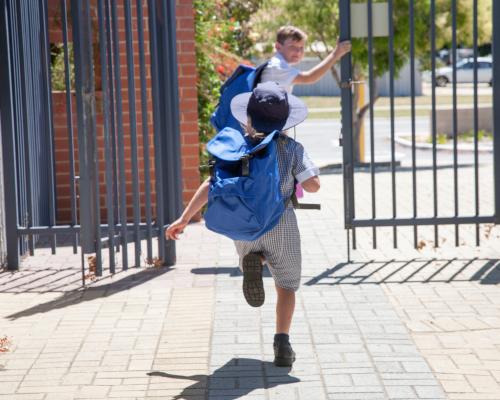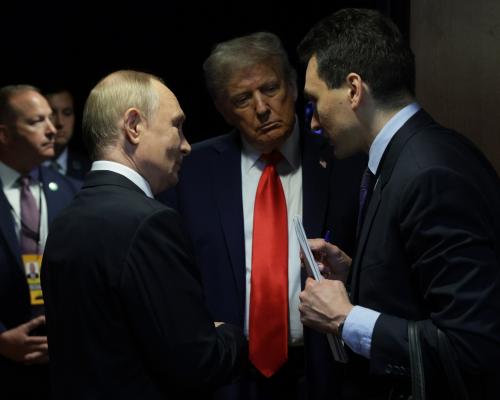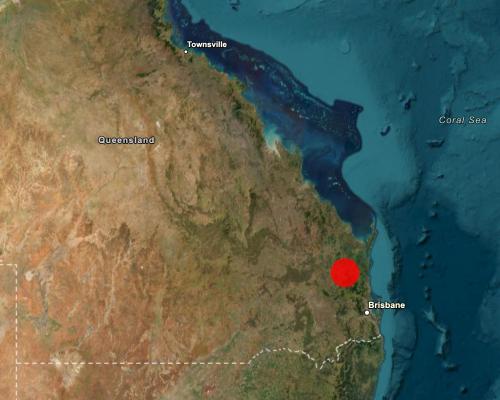
When the Australian Christian college (ACC) in north-west Sydney began receiving a surge of enrolments after the pandemic, its principal, Brendan Corr, was not surprised.
ACC is located in Marsden Park, a major growth corridor of Sydney identified by the state government as an area where a failure to factor in the pace and scale of development has left families without access to local public schools.
ACC has more than doubled in size, from 667 students in 2019 to 2,155 in 2024, the strongest growth of any independent school in New South Wales. While 60% of families are Christian, 40% either have no religion or are from other faith backgrounds, predominantly Hindu.
Sign up: AU Breaking News email
The ACC is not an outlier. Enrolments in religious schools have increased by a record 30% in NSW in the past decade, new data shows – and not necessarily correlating with student beliefs.
The Association of Independent Schools of NSW (AISNSW), the peak body for the state’s 430 independent schools, released a new report on Wednesday finding independent schools have enrolled almost two-thirds of the state’s additional students since 2000 – growing by 101,565.
More new students were enrolled in NSW independent schools in the past five years than every state and territory government school sector combined. They now account for almost 20% of state enrolments, up from 13% in 2000.
And religious independent schools, which represent more than 80% of the sector, have done the heavy lifting.
Enrolments surged by 30% in a decade, compared with 2% in government schools and 6% in Catholic systemic systems. Growth was highest in Sydney’s north-west and south-west, including Blacktown, Baulkham Hills and Hawkesbury, where 10 new low-to-medium fee independent schools opened over the past decade.
The acting education minister, Courtney Houssos, says the former government “neglected growing suburbs”, leaving “many families” in Western Sydney without a public school option.
An audit of enrolment growth in NSW, released last year, found the top 10 student growth areas between 2018 and 2023, all located in Sydney’s north-west and south-west corridors, collectively accounted for almost 40% of the state’s student enrolment growth.
Houssos says the state government is investing $9bn in new and upgraded schools, including $3.9bn in Western Sydney, to address the backlog, including new schools in Leppington, Tallawong, Box Hill, Gables, Gledswood Hills and Jordan Springs.
Corr believes his school’s success is not just down to geography.
“Spiritual nurturing is something that’s important to our parents,” he says. “It’s not even just that people of non-faith are welcomed into the school, which they undoubtedly are.
“Regardless of the faith position of a family, the students gain benefit of being part of our Christian community, because of the way we see humanity and serve it.”
AISNSW’s chief executive, Margery Evans, says the face of independent schools is changing, led by low-to-medium fee Christian, Islamic and Anglican schools.
“In 2025, the typical independent school is co-ed, K-12, faith-based, located west of Parramatta and charging less than $6,000 a year,” Evans says.
That’s despite a decline in religious affiliation. The percentage of students who identified as having no faith in NSW almost doubled in the past decade, the report found, from 16% to 29%.
But while affiliation with Christianity dropped from 55% to 38%, students identifying as Islamic increased from 8% to 12%.
The findings aligned with the latest census data, which found religious affiliation had dramatically reduced overall, but non-Christian religions, including Islam, Hinduism, Sikhism and Buddhism, grew – from 3.5% of the population in 1996 to 10% in 2021, or 2.5 million people.
Anglican schools enrolled the largest proportion of students in NSW independent schools (27%), followed by Catholic independent (18%) and Christian (16%), the AISNSW report found. They were among 15 different faiths represented in the state’s schooling system, from Hare Krishna to Seventh Day Adventist, Pentecostal and Brethren.
Islamic schools experienced the most rapid annual enrolment growth of any sector in the past five years (5.2%, or an additional 5,074 students), representing 9% of the state’s religious schools overall.
Four expanded by more than 20% in the past five years, placing them among the top 15 fastest-growing schools statewide.
The religious schools sector has faced backlash in recent years for allowing staff and students to be discriminated against on the basis of sexuality and gender identity. Last year, the Australian Law Reform Commission recommended the blanket exemptions should be repealed, a view backed by the majority of Australians, but the prime minister has ruled out legislating new laws without bipartisan support.
Emma Rowe, an associate professor in education at Deakin University, says religious schools can be “very inclusive” towards different identities. But she is against private schools – disproportionately composed of religious schools – receiving taxpayer money.
“I’m not opposed to religious schools receiving government funding. I’m opposed to private schools receiving government funding,” Rowe says.
“If you want to practise a religion in school, but you’re not charging tuition fees, and you are accepting everyone at the door – I think that’s different.”





